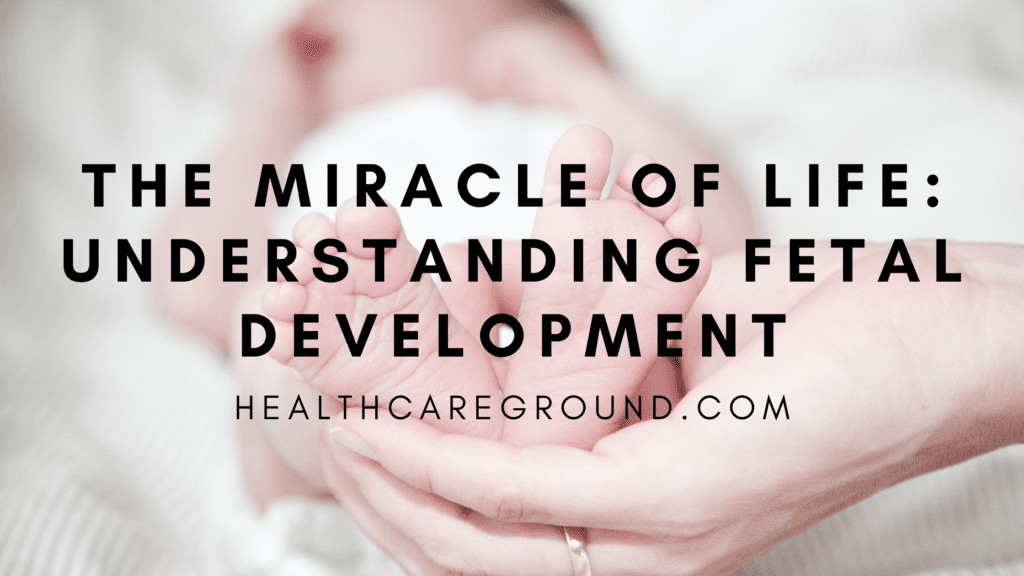Gestation is a remarkable trip that marks the morning of a new life. The process of fetal development, from the moment of generality to birth, is a complex and admiration- inspiring trip. In this composition, we will explore the colorful stages of fetal development, from the conformation of a single cell to the birth of a completely developed baby. Understanding this miraculous process not only deepens our appreciation for life but also empowers expectant parents with essential knowledge about the growth and development of their future child.
I. Conception: The Spark of Life
Fetal development begins with generality, a process that occurs when a sperm cell from the father fertilizes an egg cell from the mama . This union forms a single cell known as a zygote, containing all the inheritable information demanded to produce a unique existent. The zygote snappily divides and multiplies as it travels through the fallopian tube toward the uterus.
II. Implantation: Finding a Home
Around six to ten days after generality, the developing embryo reaches the uterus and begins to implant itself into the uterine filling. This process allows the embryo to establish a connection with the mama ‘s body, which is essential for carrying nutrients and oxygen for farther growth.
III. Embryonic Development: The Foundation
The coming critical phase of fetal development is the embryonic stage, which spans from the third week to the eighth week after generality. During this period, the introductory structures of the body begin to form. The embryo’s heart starts beating, and rudimentary organs similar as the brain, spinal cord, and branches develop. By the end of the embryonic stage, the embryo is appertained to as a fetus.
IV. Organ Development: Building the Systems
From the ninth week onward, the fetal stage begins, lasting until birth. This stage is marked by the rapid-fire growth and refinement of the developing organs and systems. crucial mileposts during this stage include the development of the circulatory system, respiratory system, digestive system, and nervous system. also, the fetus starts to parade reflexive movements, although these aren’t yet under conscious control.
V. The Role of the Placenta: Life Support
Throughout fetal development, the placenta plays a vital part as a life support system. This organ, formed by the union of motherly and fetal apkins, serves as a ground between the mama and the developing baby. It facilitates the exchange of oxygen, nutrients, and waste products, icing the fetus receives everything it needs for growth and development.
VI. Fetal Growth and Maturation
As the gestation progresses, the fetus undergoes remarkable growth and development. By the end of the first trimester( around 12 weeks), the baby has utmost of its vital organs and structures in place. The alternate trimester is marked by significant growth in size and weight, as well as the development of sensitive organs like the eyes and cognizance. During the third trimester, the fetus prepares for birth by gaining fresh weight and developing the capability to regulate essential fleshly functions singly.
VII. Fetal Movement: A Sign of Life
One of the most instigative aspects of gestation is feeling the baby’s movements. These movements, known as” quickening,” are generally felt by the mama around the 18th to 25th week of gestation. originally, they may be subtle flutters, but they gradationally come more pronounced as the fetus grows. Fetal movement is an encouraging sign of a healthy gestation.
VIII. Fetal Senses: The World Inside the Womb
Contrary to popular belief, fetuses aren’t insulated from the outside world. They can perceive sounds, light, and indeed respond to external stimulants. By the third trimester, a developing baby can hear sounds from the mama ‘s body and the external terrain. This early sensitive exposure plays a part in shaping the baby’s unborn development.
IX. The Final Stages: Preparing for Birth
As the due date approaches, the baby positions itself for birth. This process, known as” engagement” or” lightening,” involves the baby’s head moving over into the mama ‘s pelvis. The mama may witness condensation and other signs that labor is imminent.
X. Birth: The Beginning of a New Chapter
The capstone of nine months of fetal development is the moment of birth. This admiration- inspiring event marks the transition from the protected terrain of the womb to the outside world. The baby takes its first breath, initiating a series of physiological changes, and begins its trip through life.
Conclusion
Understanding fetal development isn’t only a testament to the sensations of biology but also a source of wonder and joy for expectant parents. It highlights the intricate process that transforms a single cell into a completely formed mortal being. The trip from generality to birth is a remarkable one, filled with stages of growth, organ development, and sensitive gests that shape the foundation of a person’s life. Appreciating this miraculous process can consolidate our reverence for the phenomenon of life itself, celebrating the beauty of creation and the pledge of a new morning.

